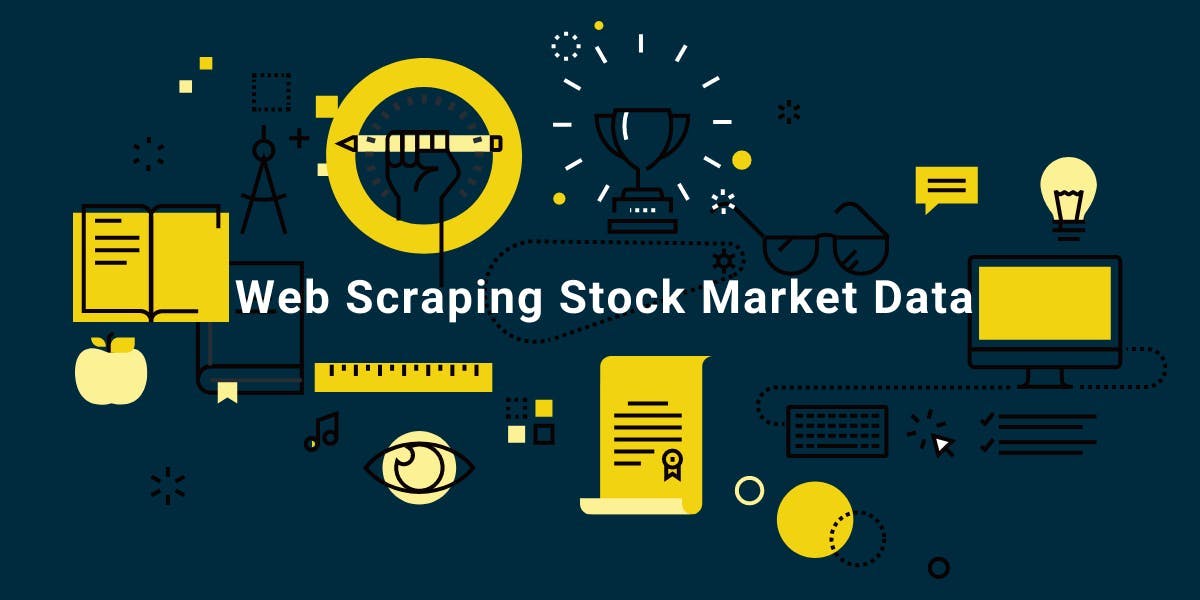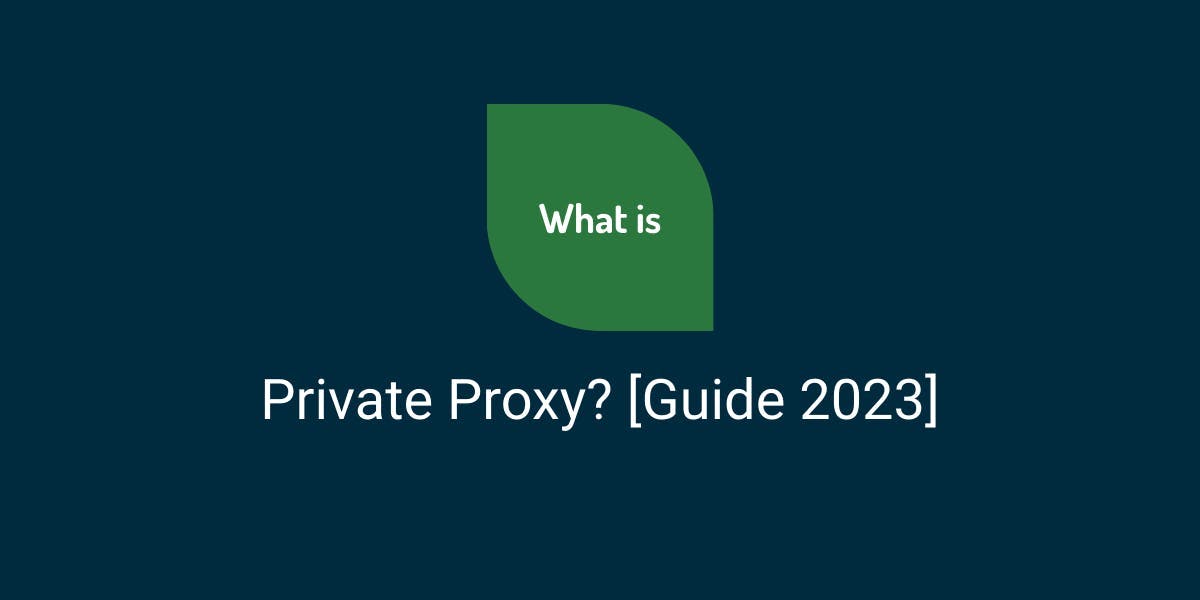Web Scraping Stock Market Data
Flipnode on May 30 2023

The stock market is renowned for its high volatility, capable of experiencing rapid fluctuations in stock prices, as exemplified by the recent pandemic. Consequently, it has garnered significant attention. Currently, stock prices are more affordable than in the past, which has attracted numerous individuals to venture into the stock market.
In our blog posts, we typically discuss data scraping projects that cater to a broad audience. However, stock market data differs in nature—it is more specialized and primarily beneficial to a select group of professionals. If you are seeking web scraping project ideas specifically tailored to financial instruments, continue reading!
What is web scraping?
Web scraping involves systematically collecting a vast amount of data from a predefined list of sources or websites. By scraping specific data from an expanded index related to a particular demographic, corporations can obtain accurate and valuable information that serves various purposes.
While commercial and marketing companies commonly benefit from data scraping, acquiring stock data itself is a lucrative endeavor. In the realm of investing, stock data holds immense significance and provides investors with crucial insights, including:
- Stock market trends
- Price fluctuations
- Real-time data
- Investment opportunities
- Price predictions
Web scraping stock data may not be a straightforward task, but if executed correctly, it can yield remarkable results. It empowers investors with valuable insights into a multitude of factors that contribute to informed decision-making. Through price scraping, companies can gather publicly available information essential for data-driven decision-making.
Scraping Process
In essence, the process of scraping stock data can be broken down into three key steps.
The first step involves defining the necessary data sources for obtaining stock data. This entails identifying the specific data you require and determining where it can be found. Once you have identified the URLs of the websites you wish to scrape, you will need to send GET requests to these websites. Additionally, it is essential to clearly specify the desired characteristics of the data in the GET request, enabling the scraper to efficiently collect the required information.
The second step is parsing, which involves structuring the collected data. In many cases, the data will be presented in HTML or XML documents, which are not immediately suitable for data analysis. Therefore, it is necessary to parse the data into a tree structure. A commonly used tool for this purpose is the Beautiful Soup Python library, which enables the creation of structured data from HTML or XML documents.
Finally, you need to store the structured data in a usable format. This typically involves saving the data in formats such as CSV, Excel files, or JSON. These formats allow for convenient data crunching and analysis, enabling the generation of insights regarding the financial market.
How businesses can benefit from stock market scraping
Businesses can derive various benefits from scraping, including extracting user information, monitoring economic trends, and particularly, analyzing the stock market. Investment firms often rely on web scraping tools to gather comprehensive data for making informed decisions before investing in specific stocks.
However, navigating the stock market and investing safely is no easy feat. It is a complex system influenced by multiple volatile variables, each capable of exerting a significant and unpredictable impact on stock values. By analyzing these variables through data accumulation, investments can be made with greater confidence and security.
One effective approach to amassing extensive data is through stock market data scraping. This involves extracting substantial amounts of data from stock markets using dedicated web or stock market scrapers. Such software automates the collection of valuable information, which can later be parsed and analyzed to facilitate intelligent and well-researched investment strategies in the stock market.
Where to get stock market data?
Professionals have multiple options when it comes to acquiring stock data from the web through APIs. In the past, Google Finance was a commonly used platform, but it has been deprecated since 2012.
One widely favored choice is Yahoo Finance, which has been available intermittently over the years, with periods of deprecation and revival. However, if Yahoo Finance doesn't align well with your project, there are several private companies that offer APIs for accessing stock data. Additionally, stock exchange websites or finance portals can serve as reliable sources of data for your needs.
The tools associated with stock market scraping
To maximize their profits through stock market investments, investment firms and businesses must utilize the necessary tools for stock data scraping. Data scraping is a complex process that involves multiple tools to collect, refine, and provide reliable data.
Python
Python is a widely used tool for scraping stock market data. Its high-level programming language offers simplicity and reliability with its straightforward syntax. Moreover, Python provides built-in libraries like Pandas, Selenium, and Beautiful Soup, which streamline the process by automating repetitive tasks.
Web Crawling Software
Web crawling software typically consists of algorithms, known as spiders, that navigate finance websites based on predefined rules. Although web crawlers and web scrapers are often mentioned interchangeably, they serve different purposes. A web crawler focuses on discovering and identifying targets, while a web scraper extracts specific data from those targets.
Some providers offer standalone web crawling software that includes additional features. These user-friendly solutions cater to individuals with limited coding knowledge, making them easy to implement.
API
A Scraper API is a more advanced tool that combines the functionalities of a Python scraper and web crawling software. It incorporates a scraper, a crawler, and a parser, allowing users to request specific information for extraction. The results are then delivered in a structured format, such as JSON, simplifying data analysis and integration.
The troubles associated with stock market scraping
Web scraping, as mentioned earlier, is not a straightforward task. It requires a careful and precise execution of steps to obtain valuable information and data. Additionally, there are measures in place to hinder data scraping, adding to the complexity of the process.
Due to these challenges, many reputable companies opt to develop their own tools to overcome obstacles encountered during web scraping. One common hurdle in stock data scraping is the blocking of IP addresses, which restricts access to the desired data sources and yields no information.
By programming their stock data scraper in-house and utilizing external resources like proxies, most of these issues can be mitigated. While some obstacles may be inevitable, creating a private scraper tool allows businesses to circumvent certain restrictions.
Real-time data scraping
The stock market is highly volatile, with frequent changes occurring rapidly. Therefore, it is essential to employ a real-time data scraper. This type of scraper collects, refines, and analyzes data in real time.
Although real-time data scrapers may be more costly compared to slower alternatives, they are the optimal choice for investment firms and businesses engaged in time-sensitive stock market investments that demand precision and prompt decision-making.
Conclusion
Incorporating a scraper tool for stock market data scraping is crucial for investment firms and companies seeking well-informed decisions regarding stock market investments.
Although there are a few challenges associated with these tools that can impede their functionality, having one as part of your company's resources is essential for effective investment strategies.
The process of scraping stock market data involves indexing various stock market websites and APIs, employing a web scraper tool to extract data from directories, and subsequently refining, analyzing, and utilizing the obtained data.



